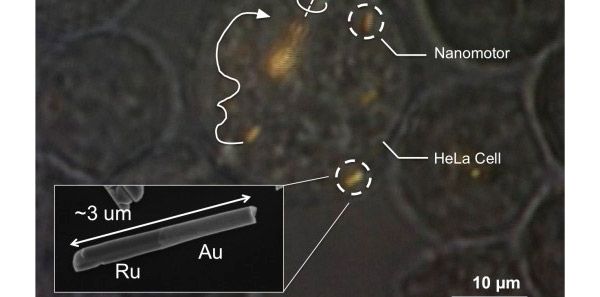New publications
Nanomotors or "self-medication" for gadgets
Last reviewed: 02.07.2025

All iLive content is medically reviewed or fact checked to ensure as much factual accuracy as possible.
We have strict sourcing guidelines and only link to reputable media sites, academic research institutions and, whenever possible, medically peer reviewed studies. Note that the numbers in parentheses ([1], [2], etc.) are clickable links to these studies.
If you feel that any of our content is inaccurate, out-of-date, or otherwise questionable, please select it and press Ctrl + Enter.
A computer, tablet or smartphone that can repair itself sounds like science fiction, but for scientists there are no limits to the impossible, and one of the latest studies has developed a nanomotor that can fix minor problems without outside intervention.
The idea of creating such a device was suggested by the organism itself, or more precisely, the immune system. As is known, immunity is a unique system of vertebrates that protects tissues and organs from diseases, identifies and destroys pathogens (viruses, bacteria) and tumor cells. The immune system is capable of recognizing a huge number of different pathogens, and it also distinguishes biomolecules of its own cells from foreign ones.
As a result, the researchers developed nanomotors that are able to move independently, find and fix various faults in electronic systems (for example, small scratches). Such nanomotors, according to experts, can be used in electrodes, flexible or standard solar panels and other devices that will fix small defects without outside interference.
Dr. Jenxing Li from the University of California noted that the circuits used in almost all modern electronic devices are complex mechanisms in which even a small crack can cause the device to malfunction. Today, broken electronics are restored using soldering, but nanorepair will be a real breakthrough.
Gadgets are quickly entering our lives and in the near future they may appear in all areas of our lives, from clothing to implants and accessories. But finding problems, fixing faults in electronic circuits is a big problem at this stage.
The research team created a project and constructed a nanomotor from gold nanoparticles, which is powered by hydrogen peroxide. The platinum included in the composition activates the breakdown of fuel into oxygen and water, which helps accelerate the particles. To test their development in action, the scientists took a damaged circuit connected to an LED - as a result, the nanomotor moved over the circuit until it reached a break, then plunged into it and became a kind of bridge connecting the two sides, since the nanomotor particles are made of conductive materials, the ability of the circuit to transmit current was restored, and the LED began to glow again.

According to Professor Li, such nanomotors would be ideal for circuits located in hard-to-repair places, such as in the conductive layers of solar panels used in adverse weather conditions. They could also repair damage to flexible sensors and batteries, which are being developed in parallel in Wang's lab.
Experts note that a similar method can be used in the medical field to deliver drugs to specific cells or organs, and the laboratory where Professor Li and his team work is also working on creating nanomotors that could be used to treat various diseases.
